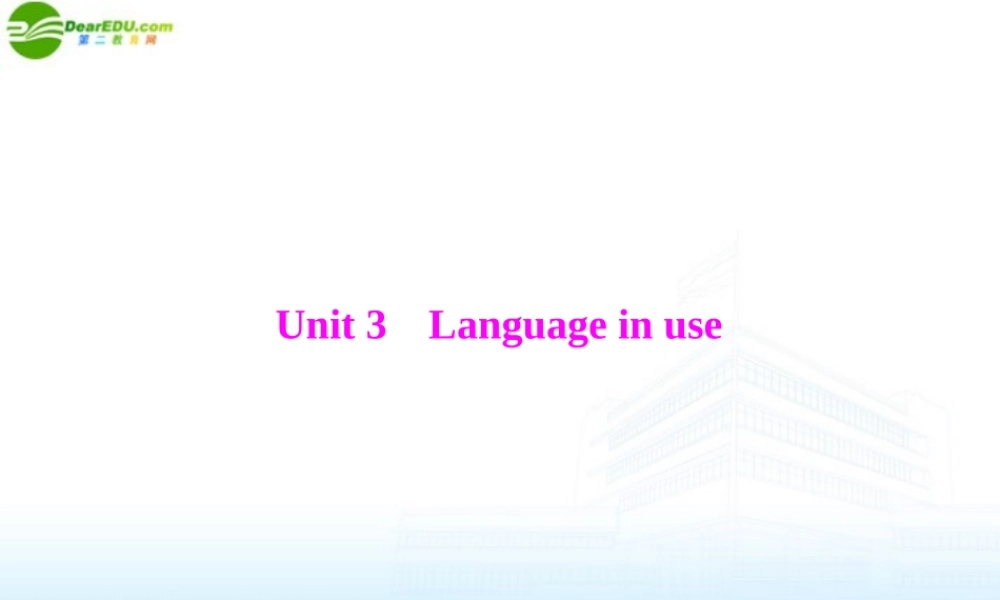Unit 3Language in use情态动词情态动词表示说话人对某一动作或状态的态度,或表示主观设想。情态动词有自己的词义,无人称和数的变化 (have to 除外 ) 。情态动词不能单独作谓语动词,必须后接实义动词或系动词原形构成谓语。其具体用法见下表。—①I saw Kevin in the supermarket this morning.—No, it ________ him.He moved to Canada last week.(2010年广东 )A . can beC . can't beB . must beD . mustn't beC 题意:“今天上午我在超市遇见凯文了。”“不,那一定不是他。他上个周就移民加拿大了。”由题意可知是表示否定的猜测,故用 can't 。②She ________ go to the supermarket far from her home—nowhereelse is good enough for her.(2010 年广东佛山 )A . mustB . has toC . canB题意:她不得不去离她家很远的超市,因为没有其他更好的地方了。表示客观上“不得不”要用 have to 。A . mustn'tC . needn'tB . shouldn'tC . can'tC 题意:桌子不脏,你不必擦它。 needn't 表示“不必要做”。mustn't 禁止, shouldn't 不应该, can't 不能,均与题意不符。③The desk is not dirty.You ________ clean it.(2010 年江苏盐城 )④Boys and girls, don't forget your report.It ________today.(2010 年浙江衢州 )A . can't finishB . can't be finishedC . should finishD . should be finishedD题意:同学们,不要忘记了报告。今天应该要完成了。表示“应当”用 should ;且 finish 与 it 是动宾关系,故用被动语态。—⑤It's such a long way! What shall I do?—You________ take my car if you want.(2010 年河南 )A . willC . mayB . mustD . shallC 题意:“真是很长的一段路程,我该怎么办呢?”“如果你愿意,你可以坐我的车。” may 表示许可,符合题意。


